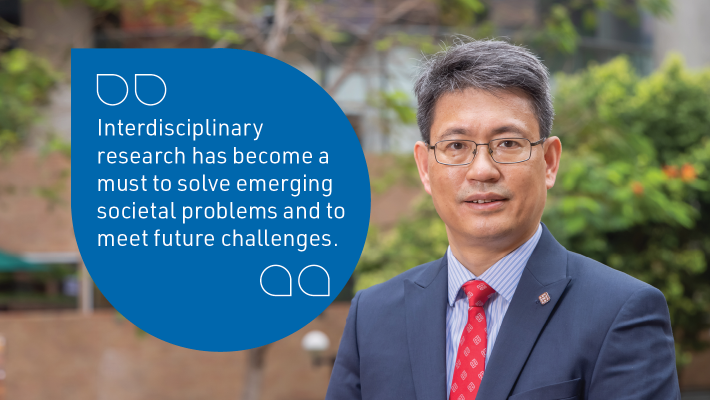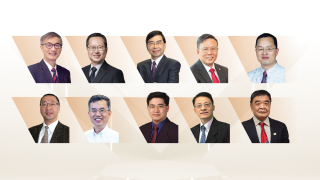A conversation with Vice President (Research and Innovation) Professor Christopher Chao — Taking research and innovation to the next level
With extensive leadership experience in the higher education sector and an outstanding track record in research publications and grants, Professor Christopher Chao was appointed Vice President (Research and Innovation) of PolyU in September 2021. He will help the University formulate and implement forward-looking research strategies to capture the opportunities offered by the Fourth Industrial Revolution and the development of the Greater Bay Area. Professor Chao is also Chair Professor of Thermal and Environmental Engineering.
You joined PolyU as an Assistant Professor from 1995 to 1997, after obtaining a PhD degree in Mechanical Engineering from the University of California, Berkeley. You then re-joined PolyU 24 years later. How has PolyU changed over the years?
When I first joined PolyU, the research environment was not as active as nowadays. Since then, the research landscape at PolyU has improved substantially. We are now in a leading position in certain fields, providing real solutions to some very challenging problems. Some of our research projects have also been in a few cutting-edge frontier areas.
Could you share your views about elevating PolyU’s research development to the next level?
Interdisciplinary research has become a must to solve emerging societal problems and to meet future challenges. The University has established the PolyU Academy for Interdisciplinary Research, also known as PAIR, which currently consists of ten research institutes and five research centres. They undertake research in frontier areas where PolyU has significant advantages or strategic interests, including artificial intelligence (AI), carbon neutrality, deep space exploration, smart cities, smart energy, smart ageing and more.
Furthermore, disciplines other than science and technology have a significant role to play. It is important to integrate STEM elements into non-STEM areas. For instance, research in smart ageing is not just about technology but also involves many aspects of social sciences. Furthermore, we have a very unique School of Design at PolyU. By linking up designers, engineers, and people involved in the humanities, we can make a big contribution and impact.
How will you foster innovative research at PolyU to facilitate knowledge creation?
Having an ecosystem conducive to an innovative mindset is crucial. We are working with different stakeholders of the University, including our researchers, institutional collaborators, industry partners and the Government, to build a robust ecosystem to support innovation.
Promoting a strong research culture and encouraging intellectual exchange is also a priority. In addition, the University has stepped up its efforts in developing collaborative research in targeted discipline areas with top-notch universities and research groups worldwide.
How can the University enhance the innovative mindset of students?
We should encourage undergraduates to view research and innovation as something they would potentially like to pursue in life.
We should put forward initiatives to cultivate their interest in research from the very start of their university studies. For example, the University launched the Undergraduate Research and Innovation Scheme last year, providing the opportunity for undergraduate students to conduct research projects under the supervision of our scholars.
The Graduate School is also investing much effort to cultivate innovative mindsets among our research graduate students. The overseas attachment scheme can be an important platform in this regard.
In your view, what will be some of the major frontier research areas in the next couple of decades?
There will be a lot of exciting knowledge breakthroughs that will advance research in the next generation. Bioinspired technology is one example. We can learn a lot from nature to address complex issues. For example, the Saharan silver ant, an insect that lives deep in the North African desert, is considered to be one of the fastest bugs on the planet. But how can it survive in the desert? It has a lot to do with the surface structure of its body, enabling it to dissipate energy very effectively using thermal radiation. These sorts of observations from nature can generate new technological insights and applications.
Neuroscience is also a significant field. In chip manufacturing and computer development, we are moving into neuromorphic computing, seeking to mimic the way that our brain is operating into computing, so that we can make a computer faster and more effective in generating the wisdom we need.
Everybody is talking about AI and Big Data. Industries are now engaged heavily in these areas with different levels of maturity.
Do you have a motto that you live by?
Nothing is really easy in life but there is no need to give up easily.
How do you spend your free time?
Seeing movies, reading books, running, and travelling.






